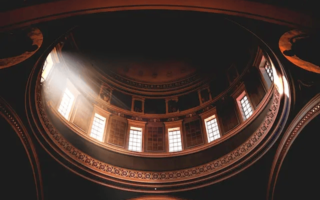Introduction:
Inca architecture stands as a testament to the ingenuity, resilience, and cultural richness of one of the most advanced civilizations of the pre-Columbian Americas. From the awe-inspiring citadels perched atop mountain peaks to the intricate stone structures that dot the Andean landscape, Inca architecture is renowned for its unique characteristics that set it apart from other ancient civilizations. In this exploration, we delve into the distinctive features that define Inca architecture, uncovering the secrets of its construction, symbolism, and enduring legacy.
1.Engineering Marvels: Precision in Stone Masonry
Dry Stone Construction Techniques One of the most remarkable aspects of Inca architecture is its mastery of dry stone construction techniques. Without the use of mortar, Inca builders meticulously shaped and fitted massive stone blocks together with astonishing precision. The result was sturdy walls, temples, and fortresses that have withstood the test of time, surviving earthquakes and centuries of exposure to the elements. The Inca technique of polygonal masonry, with irregularly shaped stones interlocking like pieces of a puzzle, remains a testament to their advanced engineering skills and craftsmanship.
2.Seamless Integration with Natural Terrain:
Inca architecture seamlessly integrates with the natural landscape, reflecting the Inca’s deep reverence for the mountains, rivers, and valleys that surrounded them. Rather than imposing their structures upon the land, Inca builders carefully selected sites that complemented the natural features of the terrain. Mountain peaks, river valleys, and cliff faces served as the foundations for their cities, fortresses, and agricultural terraces. The strategic placement of Inca settlements allowed for efficient irrigation, defense, and agricultural productivity while harmonizing with the rhythms of nature.
3.Symbolism and Spiritual Significance:
Temples and Ceremonial Centers Inca architecture was imbued with symbolism and spiritual significance, reflecting the Inca’s complex belief system and cosmology. Temples and ceremonial centers were constructed with meticulous attention to alignment, orientation, and astronomical phenomena. The Coricancha, or Temple of the Sun, in Cusco, exemplifies this symbolic architecture, with its walls adorned with gold and its windows aligned to capture the solstice sun. These sacred sites served as portals to the spiritual realm, where rituals, offerings, and ceremonies were conducted to honor the gods and ensure the prosperity of the empire.
4.Intihuatana and Astronomical Observatories:
The Intihuatana stone, found at sites such as Machu Picchu, served as an astronomical observatory and ritual platform. Carved with precision to align with the movements of the sun, moon, and stars, the Intihuatana marked the passage of time and the changing of the seasons. During solstices and equinoxes, the sun’s shadow would align perfectly with the stone, symbolizing the Inca’s connection to the celestial realm and their mastery of astronomy. In addition to the Intihuatana, Inca astronomers built observatories and celestial platforms throughout their empire to study the heavens and guide their agricultural calendar.
5.Legacy and Preservation:
UNESCO World Heritage Sites Many of the most iconic examples of Inca architecture, including Machu Picchu, Sacsayhuamán, and the Sacred Valley, have been designated as UNESCO World Heritage sites. These sites attract millions of visitors each year, drawn by their historical significance, cultural heritage, and breathtaking beauty. Preservation efforts, including restoration, conservation, and sustainable tourism management, are essential for safeguarding these fragile archaeological treasures and ensuring their continued enjoyment for future generations.
6.Indigenous Knowledge and Cultural Continuity:
Inca architecture is not merely a relic of the past but a living legacy that continues to inspire and inform contemporary Andean cultures. Indigenous communities in the Andes preserve traditional building techniques, agricultural practices, and spiritual beliefs inherited from their Inca ancestors. By honoring and revitalizing this ancestral knowledge, these communities strengthen their cultural identity, resilience, and connection to the land. Collaborative initiatives between archaeologists, historians, and indigenous peoples promote cultural exchange, mutual respect, and the preservation of Inca heritage for future generations.
Conclusion:
Inca architecture stands as a testament to the ingenuity, spirituality, and resilience of one of the greatest civilizations of the Americas. Through its precision in stone masonry, harmonious integration with the natural landscape, and profound symbolism, Inca architecture continues to captivate and inspire awe. As we unravel the secrets of Inca architecture and uncover its enduring legacy, we gain insights into the remarkable achievements of a civilization that thrived amidst the peaks and valleys of the Andes, leaving behind a legacy carved in stone for generations to come.




